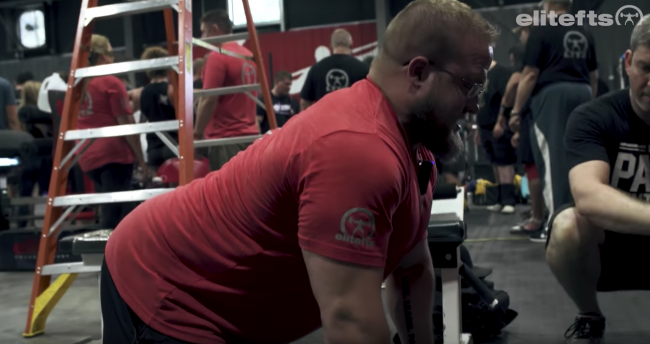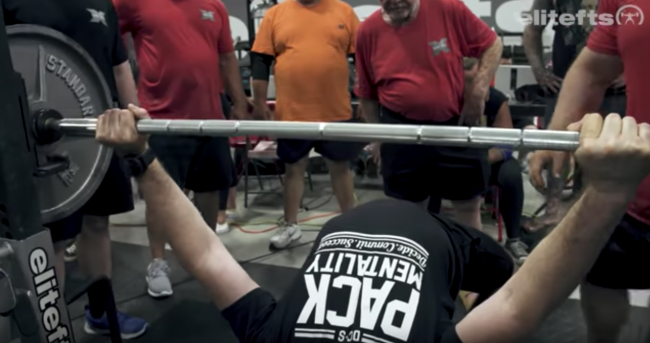
Many lifters never give the warm-up much thought at all. I admit, for many years, I just saw it as something I had to do in order to begin training. I understand now that the warm-up is actually a very important part of training that holds many benefits beyond just warming up the muscle and joints. The warm-up is a crucial part of training that deserves thought and focus.
Even though I wasn’t big on warm-ups, I always preached that the warm-up is a great opportunity to work on proper technique. This is because the development of proper technique takes time and thousands of reps. Oftentimes, lifters make the mistake of thinking this can only be done with heavy weights. It is true that technique does need to be worked with heavy weights, but at the same time, your body will develop the correct neuropathways, even with light weights. Utilizing the warm-up to work on techniques will help build stronger techniques in a much shorter time frame. Treat the light weights as if they are heavy so that even during the warm-up, you lift with intent and proper technique.
I feel like lifters often overlook the warm-up as a great way to increase training volume. Volume can be increased in many ways and does not have to always be thought of with heavy weights. The warm-up is not just something we have to do in order to start training; it is part of training and counts toward total volume in a training session. All weights lifted add up, no matter how heavy or light. Just benching an empty bar for four sets of 25 reps in a warm-up adds up to an increase in training volume of 4,500 pounds.

The warm-up is also a great opportunity to increase strength, endurance, and it increases our muscles’ ability to recover from stresses. Lifting lighter weights for higher reps at a much quicker pace allows us to accomplish all this while also giving us a little cardio to help us stay in or get in better shape. Warm-ups done correctly will continue to get a lifter in better and better shape if we continue to make them more challenging over time. The proper warm-up helps the lifter recover faster in general.
What is a proper warm-up? A proper warm-up should have a lifter sweating and breathing heavily. It should flush the body with blood while warming up all the joints and getting them moving well. It is actually good to get a little of the dreaded pump during the warm-up, but you do not want a crazy pump. The idea is to prime the body and the CNS to be able to put full effort into the rest of the training session. This is best done with light weights, high reps, and a quick pace. It should not take more than 15 minutes to do and should not take more than 10 minutes to recover. If you are not used to this, it may take a little while to get used to it.
Start small and build up as the body gets in better shape. Keep in mind that at first, your warm-up may affect the main lift during the training session simply because you are not in shape yet to handle the warm-up. This is to be expected at first, even if you start slow. Stick with it, and you will quickly realize how much better shape you are in. You will quickly begin recovering better from the warm-up and do better in your main lift. I would hate to see lifters give up on it because they jump in too quick.
For a dynamic, rep, or max effort bench session, I use a light dumbbell press, light T-bar row, and light dumbbell rollback extensions all for four sets and 25 reps done in a non-stop circuit. For deadlift and squat sessions, I use a light belt squat, light banded good mornings, and light seated leg curls for four sets and 25 reps done in a non-stop circuit. I train with three partners, and we each start at one station just rotating through. We are usually done in 10 to 15 minutes.

It is important to remember: This is a warm-up, and it is designed to make the rest of the session better, not hinder it. The weight is not important; instead, think more about the reps, sets, pace, and the movement. You should have goals of increasing the weight over time as you get in better shape but always lean towards lighter than heavier, especially at first.
MORE: Learn to Train X: Bench Press Warm-Up with Joe Sullivan
Choose exercises that warm up the main movers for that session, but it is also important to pick exercises that warm the stabilizers, too. This can be done by using banded (either attached or weight hanging off bands), unilateral, or dumbbell movements. Lift with perfect technique in order to work the correct muscles and reinforce the correct movement patterns. Take into consideration your weak links, too. The warm-up can be a great time to build them up too.
You should be continually changing up your warm-ups. This can be done in many different ways. If you are sticking with weights for a while, then make sure to keep changing up the exercises. You can also change up the number of exercises along with the reps and sets. You can do 10- or 15-minute prowler or sled sessions for the lower or upper body. You could some 10- or 15-minute plyometric sessions. I find that 10- or 15-minute medicine ball sessions work well, too. The warm-up is only limited by your imagination.











Chad